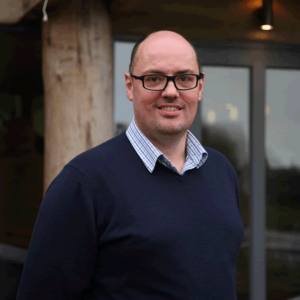A UK company is working with local schools to challenge gender stereotypes by encouraging girls to consider engineering as a career choice.
Engineering company Kingmoor Consultingis offering work experience opportunities and finding that female students are taking up the challenge with enthusiasm.
“It’s a fantastic time to study engineering as the UK needs twice the number of current graduate engineers,” said Kingmoor Consulting director Colin Aimers.
He made a call for more girls to consider engineering after recent visits by pupils in local sixth forms – and after seeing research showing that only 11% of the engineering workforce is female. The UK has the lowest percentage of female engineering professionals in Europe, at less than 10%, while Latvia, Bulgaria and Cyprus lead with nearly 30%.

In the UK, 15% of engineering undergraduates are women compared with India, where more than 30% of engineering students are women.
“Engineering is inherently linked with engines, but it is so much more. It is everything we use and do,” says Colin. “It is important to encourage potential engineers with the wide range of activities we undertake, in particular girls who have great maths or physics as well as a passion for being creative.”
Recent sixth formers to take up the challenge came from Trinity High School and William Howard School. Rose Williams, 17, who hopes to study structural engineering at university, spent a week at Kingmoor Consulting, experiencing the day to day work undertaken for homeowners, contractors and builders.
This included site visits to building companies Reiver Homes, McKnight and Sons, and Lattimer Homes, seeing projects at different stages of build, as well meeting clients for new projects, learning CAD packages and building models.
Rose, who is in Year 13 at Trinity School, and says that maths is her favourite subject, said that the work experience confirmed what she wanted to do in the future. “I realised there is much more to civil and structural engineering than I thought. I spent the week there and I really benefited from the knowledge and experience they had to offer.”

At a recent conference on engineering and architecture Dr Will Whittow, Senior Lecturer at the Wolfson School of Mechanical, Electrical and Manufacturing Engineering at Loughborough University, said that now was a fantastic time for girls to consider a career in engineering.
“Companies know that recruiting employees from a diversity of backgrounds and who can offer a diversity of ideas is advantageous. They’re working hard to change the misconception that engineering is just for boys and are encouraging people to work flexible hours. Engineering has the lowest percentage of female engineers in Europe. This is partly due to the language issue that ‘engineer’ means engines; whereas in European languages it is often derived from ‘ingenuity’. Being an engineer is using your observation skills, imagination, creativity and problem solving.”
Rose said: “Before doing my work experience, I didn’t realise that being a civil or structural engineering involves having lots of people skills because on the job you are constantly working with all types of people you must get on with: the builders, the architects, the homeowners and many more.”
Colin Aimers said: “Our students experience a wide range of our activities and it is great for them to meet some of our clients in action. As an engineer, you can make a real difference to the world and help to shape our futures by contributing to the challenges we may face in energy, communications, healthcare, manufacturing, transport and other sectors.”
Who knew that …
Hedy Lamarr, the movie star of the 1930s and 1940s, was also an engineer who invented a remote-controlled communications system for the US military during World War II. Lamarr’s frequency-hopping theory now serves as a basis for modern communication technology, such as Bluetooth and Wi-Fi network connections.
American Mary Anderson (1866–1953) invented the windscreen wiper after a winter trip to New York in 1903 where she observed a driver leaving his front window open to clear falling sleet from the windshield.
Beatrice Shilling, one of only two female engineering graduates from Manchester University in 1932, found the solution to a fatal flaw in the design of engines used in two of the RAF’s mainstay aircraft – the Hurricane fighter-bomber and the iconic Spitfire fighter plane during the Battle of Britain.
 Engineer News Network The ultimate online news and information resource for today’s engineer
Engineer News Network The ultimate online news and information resource for today’s engineer



